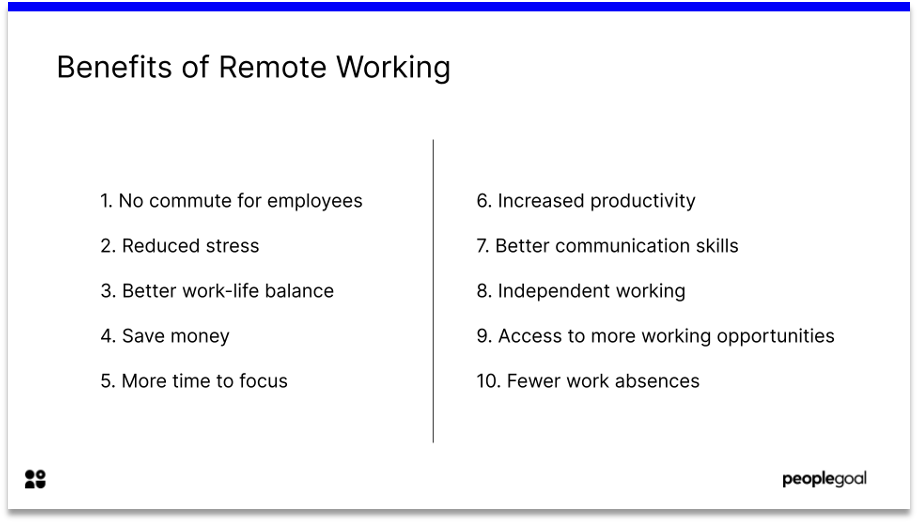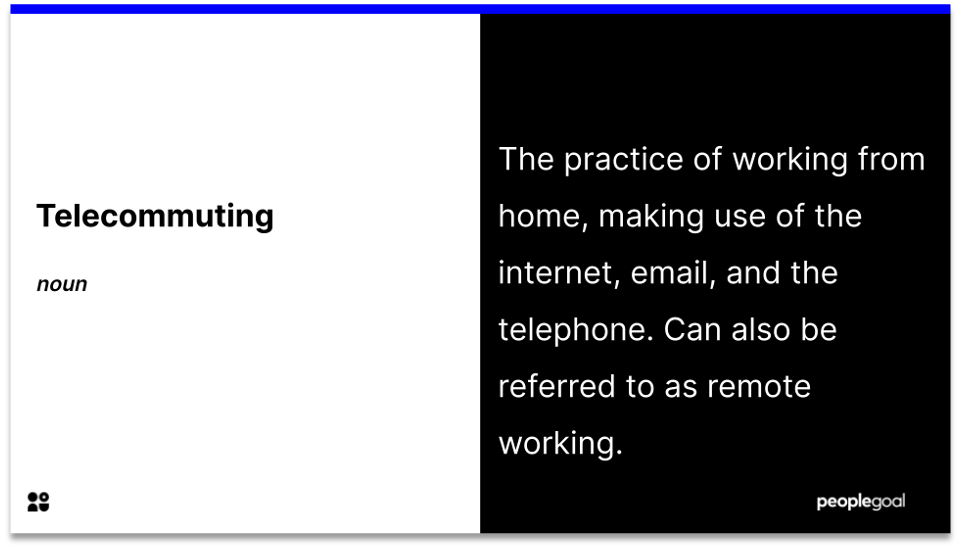Managers often avoid one-on-one meetings as they are difficult to structure and do well. However, it is one of the most powerful managerial tools a team can have.
This is because they increase employee engagement and employee performance. As well as boosting the manager’s and employees’ rapport, as identified by Gallup. This is particularly useful in a remote working environment as face-to-face contact is limited, which reduces team relationships.
What is One on One meetings?
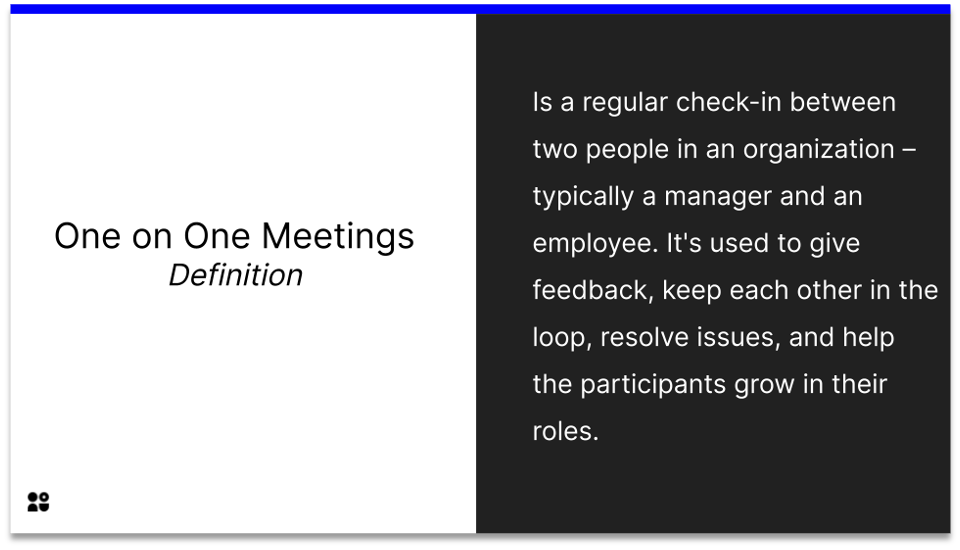
They are most beneficial when they are a recurring and dedicated time set in the calendar. They focus on direct status reports specifically based on a meeting agenda. These contain action items that need to be covered throughout the meeting to provide sufficient updates on the employee’s performance review.
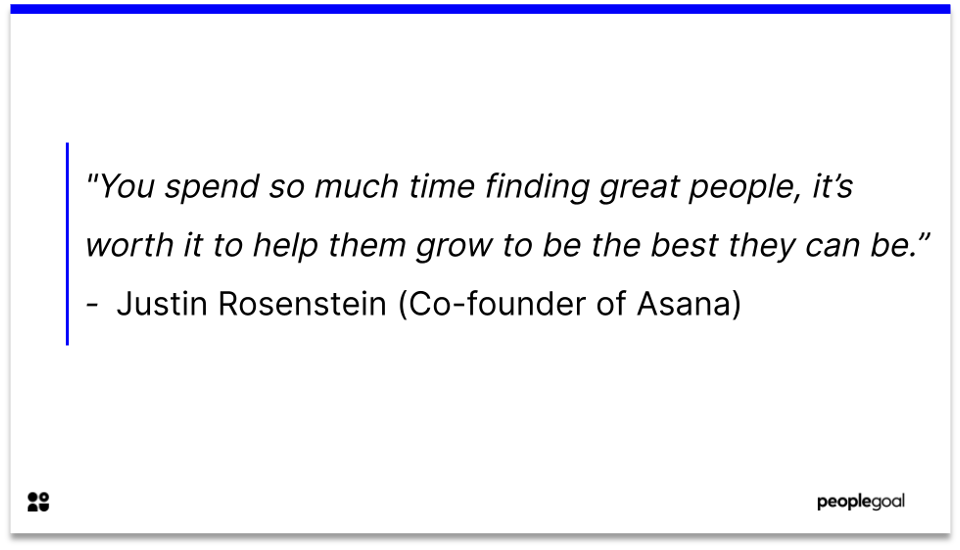
Benefits of one-on-one meetings
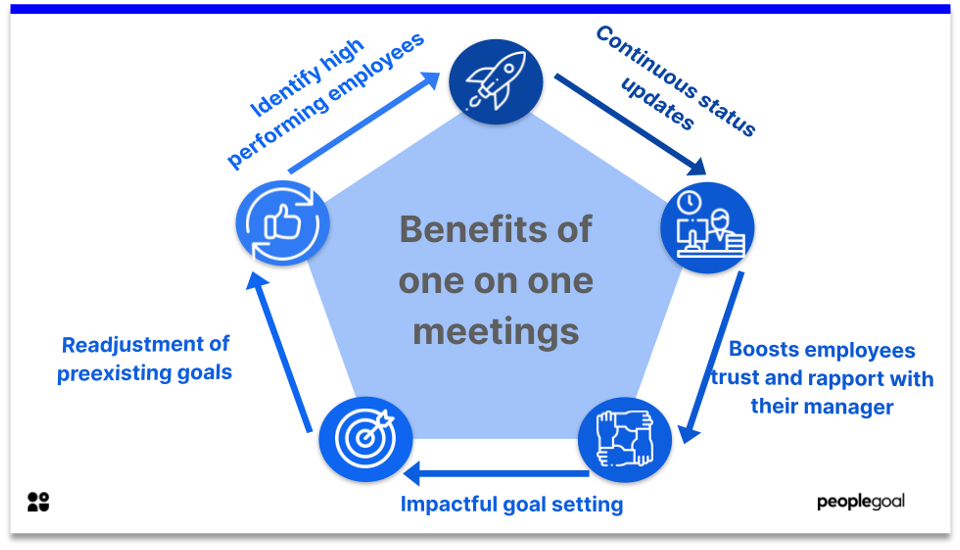
Weekly meetings have the most benefits as they allow for continuous status updates. The regular spending of time together also leads to the employees feeling better supported by the manager. This in turn boosts employees’ trust in their supervisors at a personal level. This is because employees feel more comfortable with their managers in the long term.
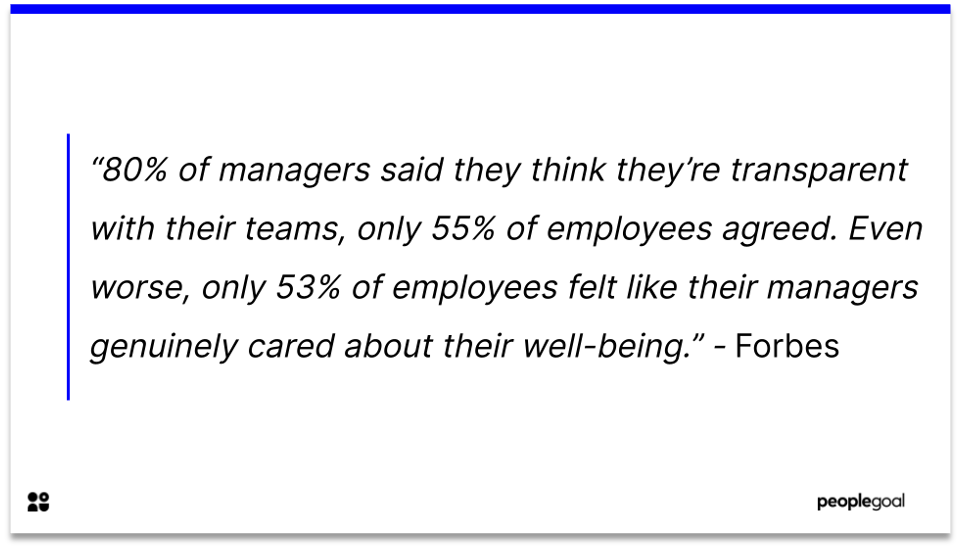
They also allow for impactful goal setting. As the manager gets to know the employee they will be able to set more suitable goals for them to achieve. They can also adequately readjust any preexisting goals by identifying key obstacles that are restricting their growth. This is done by creating tailored action plans to help the employee overcome these.
Also by using regular one-to-one meetings you can identify your high-performing employees. Therefore, you can set the goals and objectives to help them with their promotion chances. They can also be adapted to aid in their selection for leadership and senior positional training.
Why is it difficult to run one on one meetings remotely
Effective one-on-one meetings tend to be difficult to run smoothly without the added hurdle of remote work. Here is a list of common difficulties and how to overcome them by connecting better as a team.
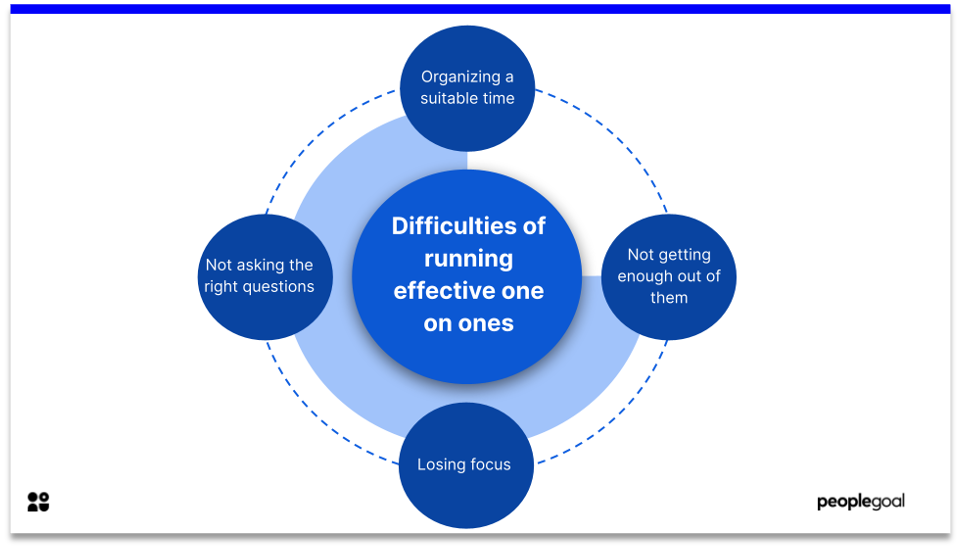
1. Organizing a suitable time
Making sure you and your team members’ time for a one-to-one is aligned is a difficult task, especially with no quick face-to-face chats to set one up. To ensure one-to-one meetings aren’t forgotten about set a weekly 30 mins aside for each team member. Then prior to the meeting send an email to check it is suitable for both of you.
PeopleGoals’s One-to-ones app makes organizing weekly one-to-ones easy and efficient. This integrates an important part of performance management with clear constructive feedback and a structured agenda templates. Its automated calendar invites mean you never have to worry about forgetting to set one up again. It also ensures that the meeting is sufficiently documented allowing for performance issues to be tackled easily.
Need inspiration for your agenda templates read our blog here for some ideas.
2. Not getting the most out of the One-to-one meeting
Remote work has eroded colleagues’ trust as identified by the BBC. This directly impacts how successful a one-on-one can be as without trust neither party are likely to share their true thoughts and opinions. Therefore, the aim is to produce a safe and comfortable space through your remote meeting.
A key tip is to come to the meeting prepared to shake off any nerves and get the ball rolling. A way to do this is by using agenda templates and prepopulating them. This ensures there is a clear context for your meetings but also makes sure everything important is covered.
Tip: As a manager request the “catch-up information” from your employee before the meeting. This allows you to make the most out of your time.
3. Losing focus in the one-on-one meeting
As stated by Forbes ‘zoom fatigue’ is becoming a real problem in offices limiting focus and engagement. As previously stated one-on-ones are extremely important to both the business and the individual. However, remote working could negate some of these effects due to loss of engagement.
Prevent this by finding ways to stay present in these meetings. Actively listen to your employee by documenting key points of the meeting from your perspective. Summarising the meeting and emailing it back to the employee also shows that you were following throughout.
In PeopleGoals one-to-one meeting app, the automatic sending of emails through schedules is a great feature relevant to this. This can be an email being sent with the key points from the meeting as soon as the manager completes their forms. Schedules allow our apps to create a comprehensive performance cycle for you – preventing you from ever missing a step in the process again.
4. Not asking the right questions
By not asking the right questions throughout the meeting could cause crucial information to be missed. An effective manager will know what questions to ask to allow the employee to provide adequate information. To prevent this mistake from being made, we have collated the best 20 questions to ask in your one-on-one meetings.
Tip: As a manager ask an open-ended question at the start to allow the conversation to flow from the beginning.
Top 25 questions to ask in a one-on-one meeting
From the Manager Perspective
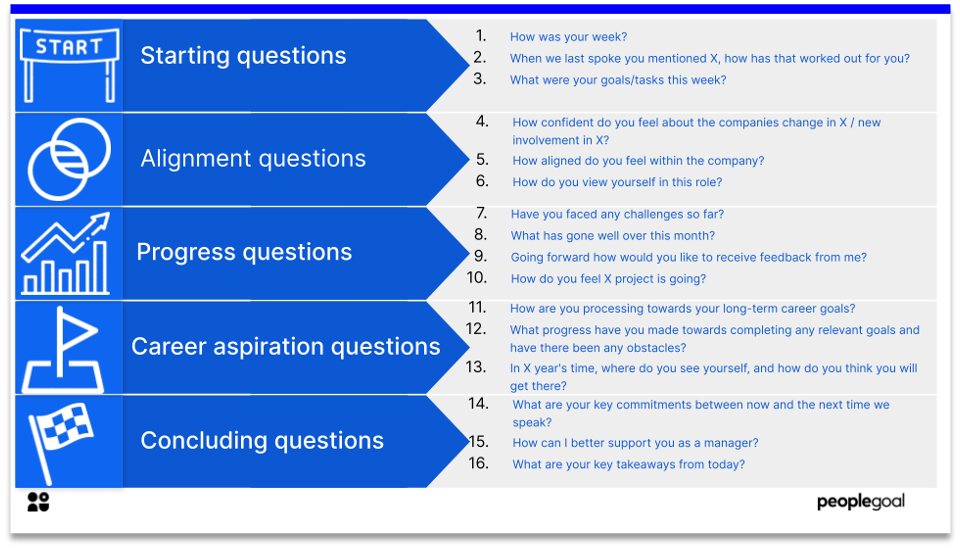
Starting questions
These open the meeting and set the tone. Aforementioned, it is advised to use open-ended questions. Flexibility is key here you want to set a calm and open tone, to begin with.
- How was your week?
- When we last spoke you mentioned X, how has that worked out for you?
- What were your goals/tasks this week?
Alignment questions
This allows you to assess how the employee’s goals and aspirations coincide with companies goals and objectives
- How confident do you feel about the companies change in X / new involvement in X?
- How aligned do you feel within the company?
- How do you view yourself in this role?
Progress questions
These are important in assessing how likely an employee is to complete their goals and can identify any areas where adjustments need to be made.
- Have you faced any challenges so far?
- What has gone well over this month?
- Going forward how would you like to receive feedback from me?
- How do you feel X project is going?
Career aspiration questions
Career conversations should be used weekly to assess how an employee is going both personally and professionally concerning their career goals.
- How are you progressing towards your long-term career goals?
- What progress have you made towards completing any relevant goals and have there been any obstacles?
- In X year’s time, where do you see yourself, and how do you think you will get there?
Concluding questions
- What are your key commitments between now and the next time we speak?
- How can I better support you as a manager?
- What are your key take aways from today?
From the employees perspective
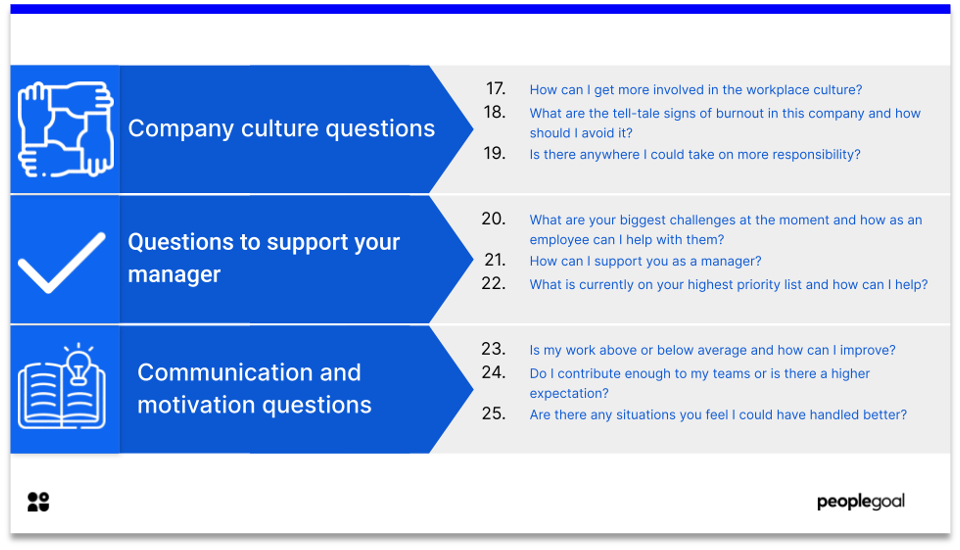
Company culture questions
Company culture is a key way to ensure you as an employee remain engaged and satisfied with your job. By demonstrating interest this shows your supervisor that you would like to further improve your engagement.
- How can I get more involved in the workplace culture?
- What are the tell-tale signs of burnout in this company and how should I avoid it?
- Is there anywhere I could take on more responsibility?
Questions to support your manager
Managing is a stressful job. This is why a study in 2009 by Randstad found that more than 50% of employees do not want to go into a managerial position. By showing support to your manager you are not only helping the people in the leadership positions but also showing your genuine interest in the companies success.
- What are your biggest challenges at the moment and how as an employee can I help with them?
- How can I support you as a manager?
- What is currently on your highest priority list and how can I help?
Communication and motivation questions
These are important in highlighting any areas as employees you feel are a bit unsure have or could be clarified.
- Is my work above or below average and how can I improve?
- Do I contribute enough to my teams or is there a higher expectation?
- Are there any situations you feel I could have handled better?
One-on-One meetings: An insight into the company
One-on-ones can provide benefits to both the company and employees. However, when done incorrectly it can make either party feel disengaged or unsupported. Hopefully, these 25 questions help boost your future meetings and maximize their performance by identifying key areas for improvement. They can also be useful in recognizing and celebrating celebrating their successes even through remote work.
Still, need some more inspiration? Read our 40 Questions for a successful one-on-one meeting.
Ready to 3x Your Teams' Performance?
Use the best performance management software to align goals, track progress, and boost employee engagement.

